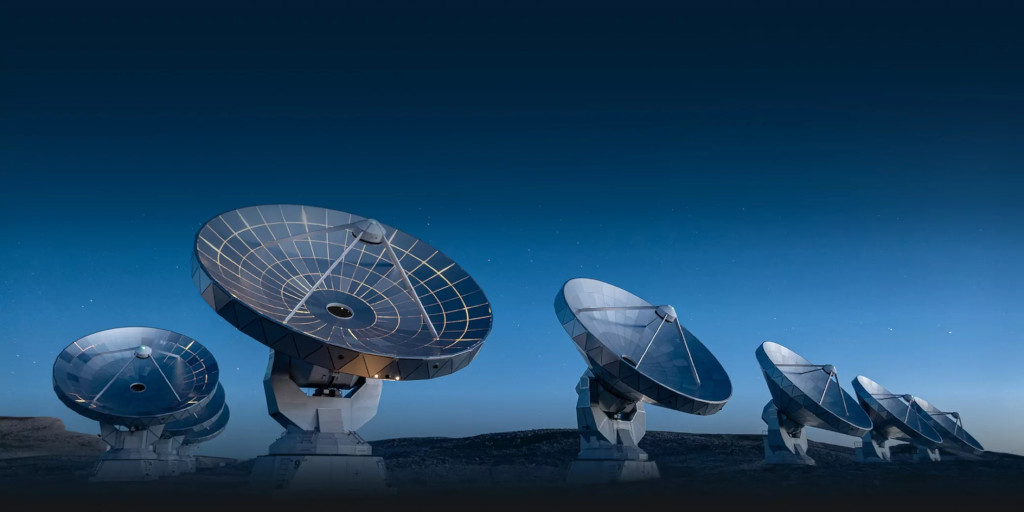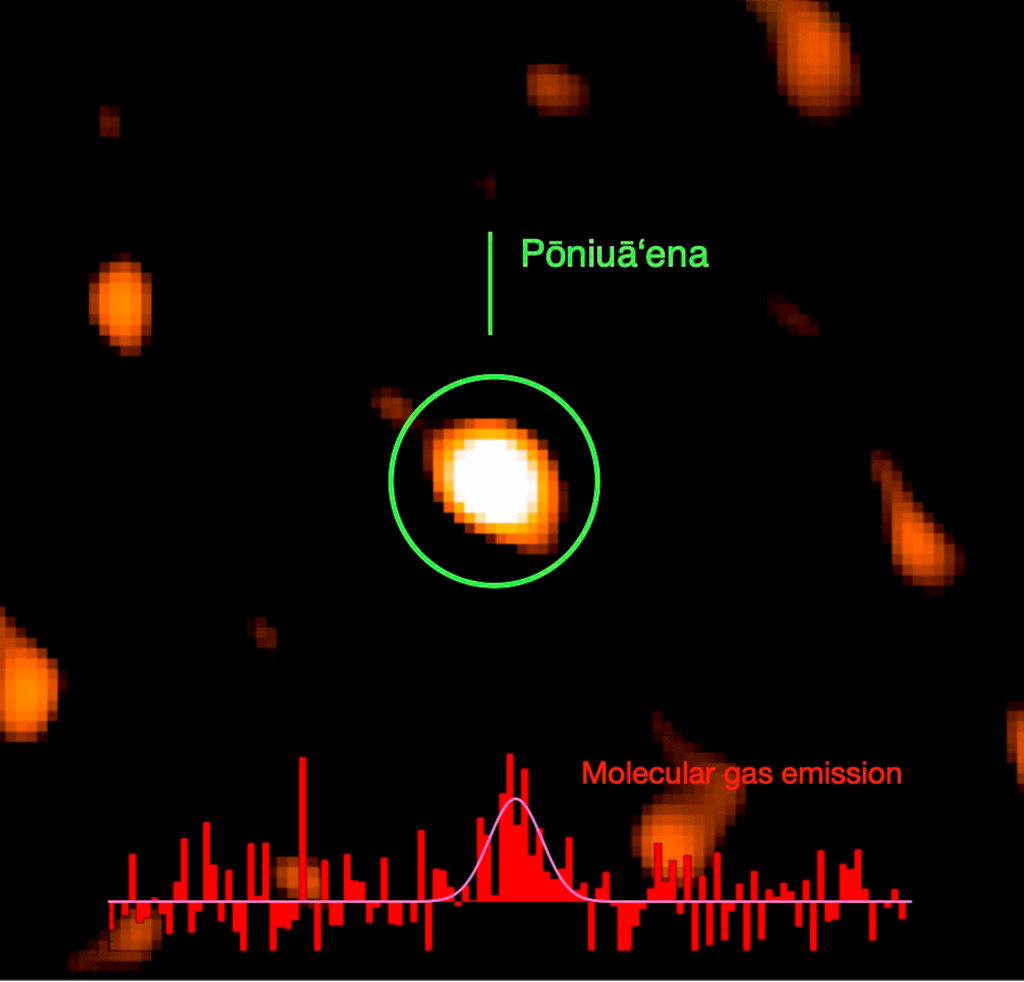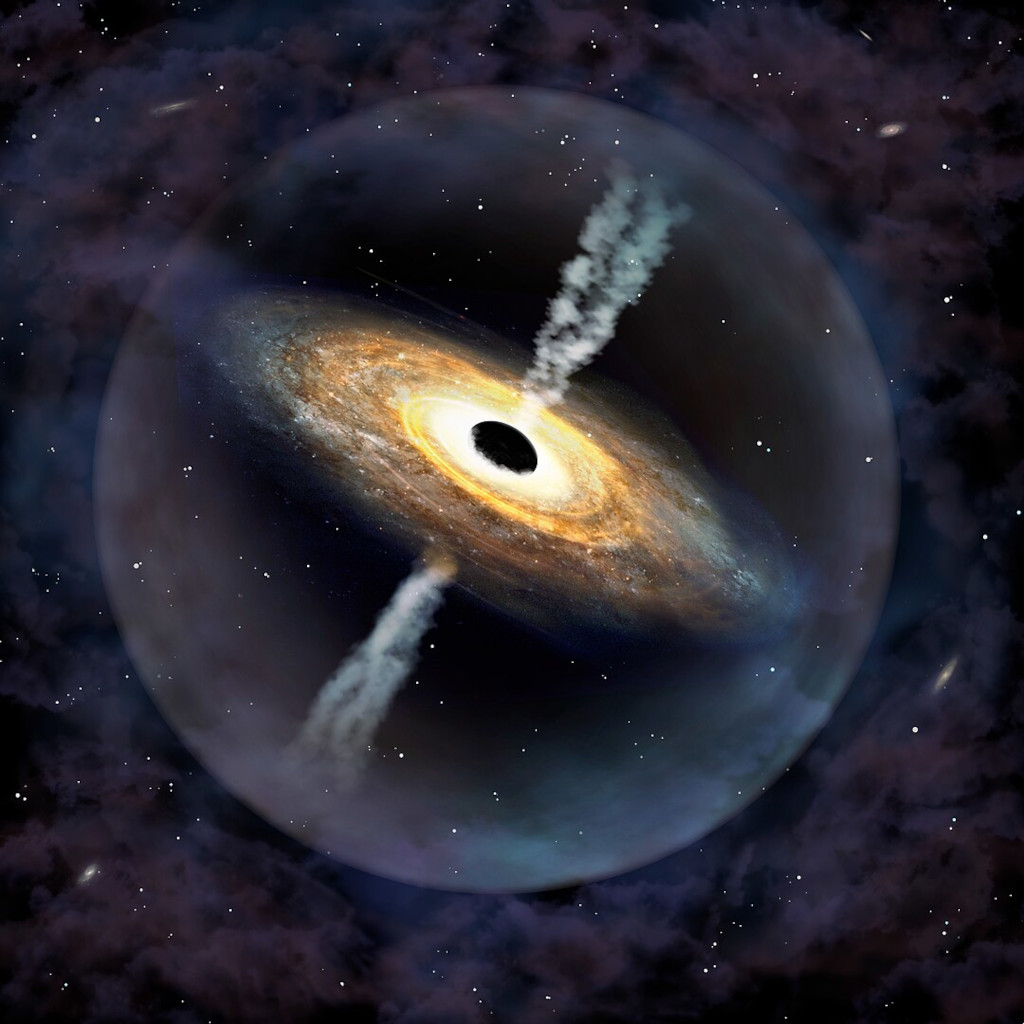It’s only been 700 million years since the Big Bang, but the galaxy hosting one of the most distant known quasars already contained clouds of carbon monoxide molecules.
The quasar in question is J1007+2115, “nicknamed” Pōniuā’ena, which in native Hawaiian roughly translates to: the invisible rotating source of creation, surrounded by radiation. The redshift of the image lines is 7.515. And it was discovered in 2020, and the mass of the black hole, which causes very strong radiation from the active galactic nucleus and captures material from its surroundings, was estimated at one and a half billion solar masses.
(Source: Gemini Observatory International / NOIRLab / NSF / AURA / P. Marenfeld)
One of the open questions in astrophysics today is how the supermassive black holes at the center of galaxies that “drive” AGN affect the galaxy itself, and vice versa: how the parent galaxy influences the functioning of the quasar. Furthermore, Ponyiwena lies at a great distance from us, so by studying it, we can look back to the initial era of galaxy formation, about 13 billion years ago. The very existence of a quasar proves that by then, one and a half billion solar masses have somehow managed to gather into a single black hole. This object must have grown in a harsh environment containing huge amounts of dust and gas, causing some headaches for theorists modeling its formation. In the past, the rapid accretion of a black hole required either the sudden gravitational collapse of a massive cloud of gas, or the merger of smaller primary black holes and the capture of material very quickly. However, the farther away supermassive black holes are observed, the less likely it is that the latter model can explain the formation of the first giants.
The private object recently provided interesting new information. An Italian-led research group pointed the antennas of the NOEMA (Northern Millimeter Extended Array) radio interferometry network operating in the French Alps at them to search for the characteristic spectral lines of carbon monoxide in the quasar’s host galaxy. It is the most sensitive and best-resolution radio telescope system in the millimeter wavelength range in the Northern Hemisphere.

The astronomers were able to detect microwave spectral lines related to the two energy transitions of the carbon monoxide molecule. This, on the one hand, confirmed the redshift previously determined on the basis of the optical spectrum, confirming the quasar’s particularly large distance. Until now, they had never been able to observe the gas in its cold molecular form so early in the universe’s life.
We know that molecular clouds play an important role in the efficient formation of stars, and something like this must have happened in both ancient and modern galaxies. Therefore, the researchers hope to find clues about the molecules. However, carbon monoxide of this mass and density was a surprise. This discovery established that by the time the universe was 700,000 years old, the atoms that make up molecules would have formed in large quantities (in this case, carbon and oxygen, whose atoms were formed in fusion processes within the early generations of the universe). stars), as well as interstellar dust. Recent measurements and calculations indicate that the interstellar molecular gas in the Pōniuā’ena galaxy may be more than 20 billion solar masses. Molecular hydrogen, which serves as the basic raw material for star formation, is unfortunately difficult to detect directly, but fortunately, its amount can be deduced based on measurements of carbon monoxide. What is really surprising about this discovery is that the proportion of dust and gas that can be observed in much later cosmic ages, that is, measured on an astronomical time scale, even today, for example in the Milky Way, is exactly the same as that measured now in a galaxy 13 billion years ago.

Pōniuā’ena is part of a sample of the “dietary habits” of the oldest bright quasars.
source: Aram announcement
Related articles:
comment












































